Península 360 Press con el apoyo de Ethnic Media Services
Por Karina Alvarado, Anna Lee Mraz Bartra y Manuel Ortiz Escámez
Calexico, California. — La pandemia por COVID-19 afectó a todo el mundo, sin embargo, perjudicó significativamente a los más desfavorecidos.
«Tenía un paciente, joven de unos 40 años, sin problemas médicos, sólo obesidad, es decir, con un índice de masa corporal —IMC— arriba de 50 y le dio COVID a principios de 2020 y murió. Es muy triste», relató el doctor Tien Vo de la clínica Vo Medical Center en Calexico, una ciudad fronteriza en el condado Imperial al sur de California.
El condado Imperial —con alrededor de 197 mil habitantes— es una de las regiones más pobres de todo Estados Unidos. Más del 86 por ciento de la población total de la zona es latina.
Antes de la pandemia esta región ya sufría graves problemas de salud, pues además de ser una comunidad de bajos recursos, se encuentra cerca del Lago Salton, un lugar altamente tóxico debido a la contaminación.
La polución del aire y del suelo en la región ha provocado que zonas del condado Imperial tengan una de las tasas más altas de asma en infantes, además de altos índices de obesidad y diabetes.
«Otra cosa, muy importante aquí, además de la obesidad, es que hay muchas personas con asma y enfermedades pulmonares obstructivas crónicas. Estamos muy contaminados debido al “Salton Sea” y eso también contribuyó a la alta tasa de mortalidad por COVID», explicó el doctor Vo para Península 360.
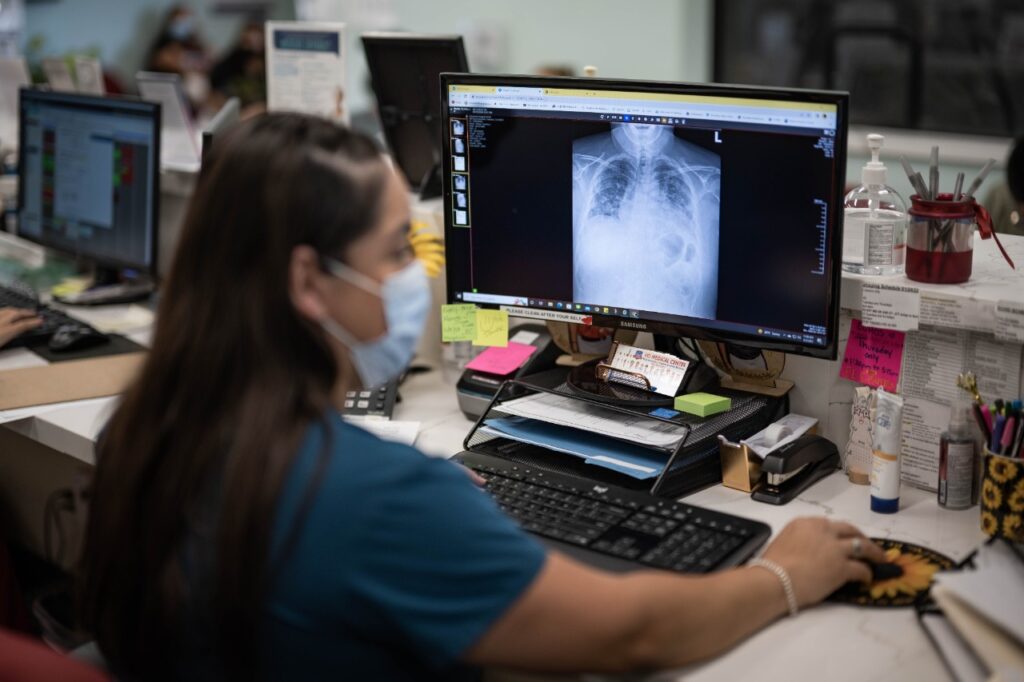
Con la llegada de la pandemia por COVID-19, el condado Imperial —que es una región compuesta mayormente por trabajadores agrícolas— fue uno de los más afectados por la enfermedad causada por el virus SARS-CoV-2, provocando una de las tasas más altas en hospitalización y mortalidad del país.
Al ser una ciudad fronteriza, el valle Imperial recibe a diario a cientos de trabajadores provenientes de México que cruzan la frontera para laborar en los campos agrícolas.
Estos trabajadores, aunque son reconocidos como necesarios para la supervivencia de miles de personas por las organizaciones de la sociedad civil, son grupos que han sido marginados e ignorados por los gobiernos federales y estatales históricamente.
«El presidente Trump nos abandonó», declaró Luis Olmedo, director ejecutivo del Comité Cívico del Valle.
A pesar de que la región fue altamente afectada, las autoridades federales y estatales no le prestaron la debida importancia, abandonando así a las comunidades vulnerables que viven en esa área.
Este abandono no solo trajo incertidumbre a las comunidades desfavorecidas del condado, sino que también desencadenó que otras organizaciones y fundaciones cesaran el apoyo.
Cuando comenzó la pandemia por COVID-19, a pesar de que el estado de California tuvo intenciones de trabajar con el Valle Imperial para dar pie a mejoras en temas de salud, tecnología, economía e infraestructura, «los rancheros han controlado la política aquí… ellos quieren gente que no tenga futuro para que sigan levantando la cosecha de esos campos», apuntó Raúl Ureña, vicealcalde de la ciudad de Calexico.
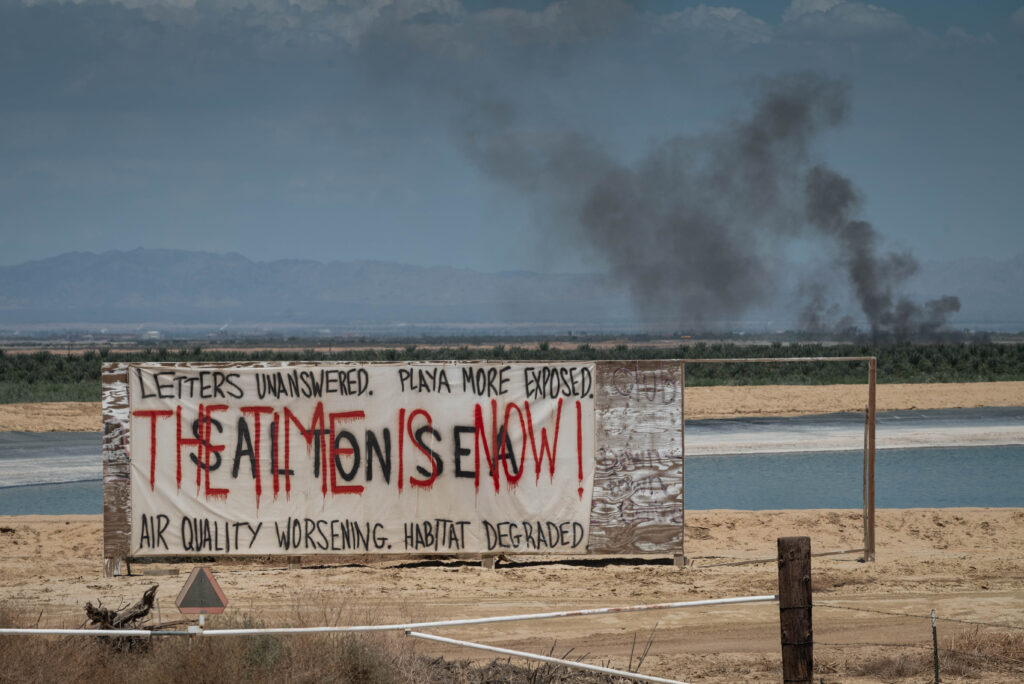
«Fue evidente que las primeras alocaciones [sic] que hace el estado de California de todos los condados, favorece desproporcionadamente a aquellos con más población y con mayor poder político. Estamos hablando de San Diego, Los Ángeles, San Francisco. No sé cuál fue el pensamiento de los oficiales en Sacramento, pero el Valle Imperial durante casi toda la pandemia tuvo la mayor tasa de mortalidad de casi todo el país», relató Ureña.
«Nos tocó proporcionalmente una burla aquí en Valle Imperial», destacó Ureña quien además señaló que las primeras campañas de vacunación no eran eficientes para las comunidades desfavorecidas, pues los lugares donde estaban ubicadas no tenían acceso a transporte público, además de las barreras tecnológicas y de idioma.
Ureña subrayó que, a nivel estatal, dicha zona recibió una menor cantidad de vacunas por ser considerada «zona rural», sin embargo, destacó que alrededor de 50 mil personas al día cruzan la frontera para trabajar, por lo que fue fundamental considerar la interacción que se tiene, incluso con las ciudades mexicanas.
Luis Olmedo, reconoció que «cuando estaba el presidente Obama hubo mucho apoyo». Asimismo, refirió que esa ayuda fue utilizada para resolver los problemas económicos y de salud de la zona.
Al verse abandonados por las autoridades durante la emergencia por COVID-19, nacieron organizaciones sin fines de lucro como «Salud sin fronteras», mismas que buscan ayudar a las comunidades más desfavorecidas sin tomar una posición política, pues para ellos la prioridad es contribuir a mejorar la calidad de vida de estas poblaciones.
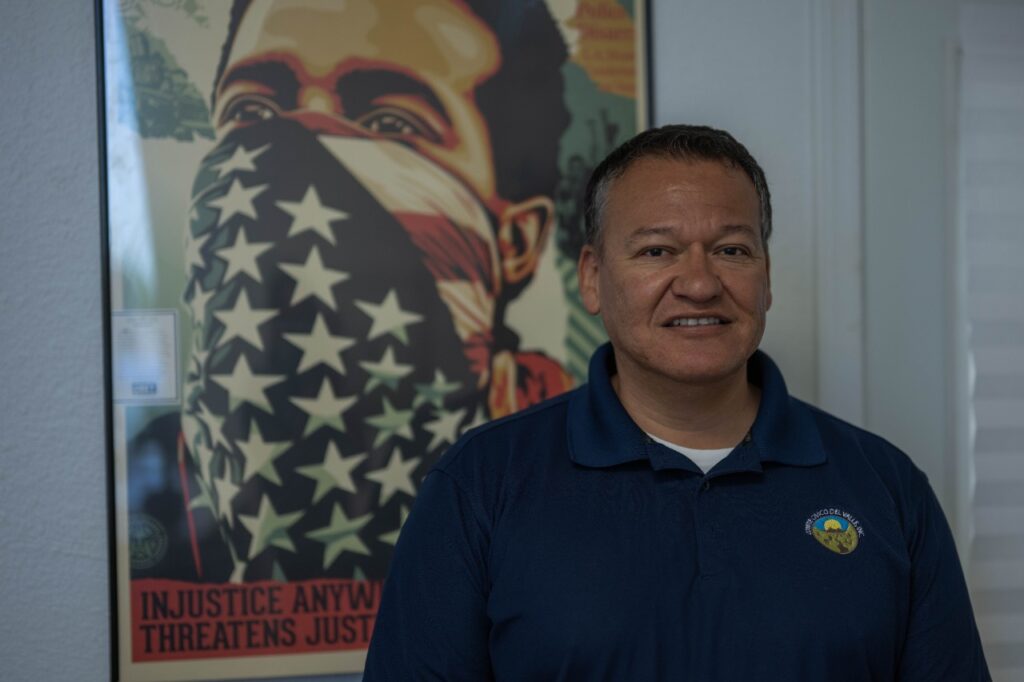
Las campañas de vacunación comenzaron a ser exitosas gracias a estos grupos de la sociedad civil, quienes avanzaron estratégicamente en la protección de la población más vulnerable a pesar de las dificultades económicas y de transporte.
Además, combatir la desinformación fue uno de los más grandes retos para las organizaciones sin fines de lucro que buscaban apoyar a las comunidades. Pues, según Olmedo, las preferencias políticas influyeron negativamente en la toma de decisión, ya que los discursos anti-mascarillas y anti-vacunas se expandieron por todo el territorio.
Mitos sobre supuestas afectaciones al corazón, hasta la supuesta implantación de chips por la vacuna contra COVID-19 circulaban prominentemente en el condado Imperial a pesar de que los Centros para el Control y Prevención de Enfermedades —CDC, por sus siglas en inglés— han señalado que dicha información es falsa.
Organizaciones como «Salud sin fronteras» le hicieron frente a la pandemia aún ante dificultades particulares de la región, tal es el caso de las afectaciones de salud debido a la contaminación del aire, del agua y del suelo.
La población de esta región fue blanco de la desinformación, pero para Olmedo, el acceso a la vacuna fue una barrera importante.
«Muchas veces a nuestra comunidad no se le da la decisión», comentó Luis Olmedo en relación con la influencia que tuvieron los mitos en la comunidad para recibir la inoculación contra COVID-19, pues a pesar de que la desinformación ha sido uno de los factores que ha minado la confianza de la gente en la vacuna, al inicio de las campañas de vacunación había pocas oportunidades de recibirla en el condado Imperial.
A los recursos del Estado, focalizados en apoyar a la población ante la emergencia sanitaria, también se sumó el sector filantrópico que comenzó a proveer recursos a organizaciones como «Salud sin fronteras» para crear campañas en los ambos lados de la frontera, de manera que las barreras económicas, tecnológicas y de idioma disminuyeran, creando oportunidades para que las comunidades latinas y de trabajadores agrícolas fueran registradas y posteriormente vacunadas.
Las organizaciones de la sociedad civil fueron clave ante la emergencia por COVID-19 pues apoyaron principalmente a campesinos y otros trabajadores esenciales a través de recursos estatales y federales.
Olmedo reconoció que «con la administración de Joe Biden, de nuevo se abrieron las puertas», de la misma manera, la administración estatal también incrementó los recursos.
Tras el incremento de recursos y las campañas de vacunación extensivas, el racismo en esta parte del país se hizo notar, según relata Ureña, quien escuchó que diversos grupos de personas comenzaron a quejarse debido a que se ofrecían vacunas y apoyo a las personas que diariamente cruzan la frontera o que no tienen residencia estadounidense: «estás dando los recursos de este país a gente que no vive aquí o que no se los merece», decían.
El condado Imperial tuvo el índice de mortalidad más alto por COVID-19 de todo el país y, gracias a la labor de organizaciones de la sociedad civil comprometidas, logró colocarse como uno de los de mayor tasa de vacunación de todo California.
Con la pandemia atenuada, surgen problemáticas aún vigentes que afectan de manera importante la salud y el bienestar de las personas que habitan la zona o que entran desde México para trabajar cosechando para empresas norteamericanas.
Uno de los problemas actuales más importantes es el de la contaminación del Lago Salton.
Con una superficie de más de 200 mil acres, este lago es el más grande de California y es alimentado por el río Nuevo que corre desde Mexicali, recorre Calexico y desemboca en Salton Sea.
Este enorme lago es uno de los más contaminados en los Estados Unidos pues recibe enormes descargas de aguas residuales de México. La contaminación y las sequías han levantado la preocupación de trabajadores, funcionarios y organizaciones.
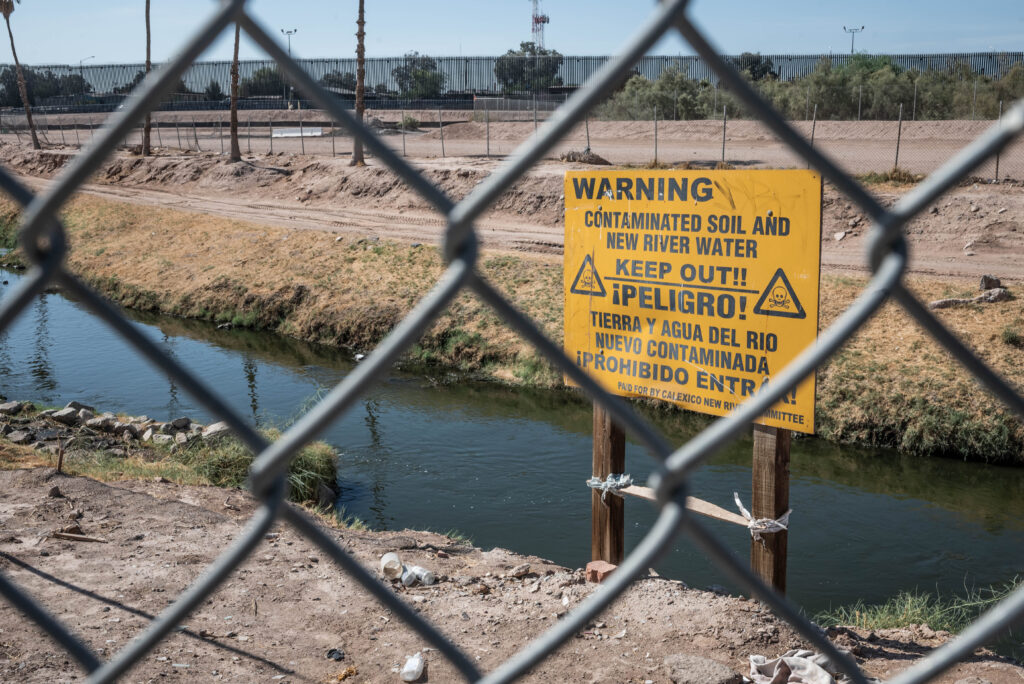
El lago Salton afecta a la salud de los pobladores y trabajadores del condado Imperial
«A los campos agrícolas se les aplican pesticidas y químicos muy tóxicos, y se han descargado por más de 100 años en el Lago Salton», señaló Olmedo.
«El mayor lago de California ofrece más de 380 millas cuadradas de actividades recreativas al aire libre, como la navegación, la observación de aves, la acampada y la pesca», anuncia Tripadvisor sobre el Salton Sea. Lo que deja fuera esta descripción es que las aves aparecen muertas a media calle y la pesca está estrictamente prohibida.
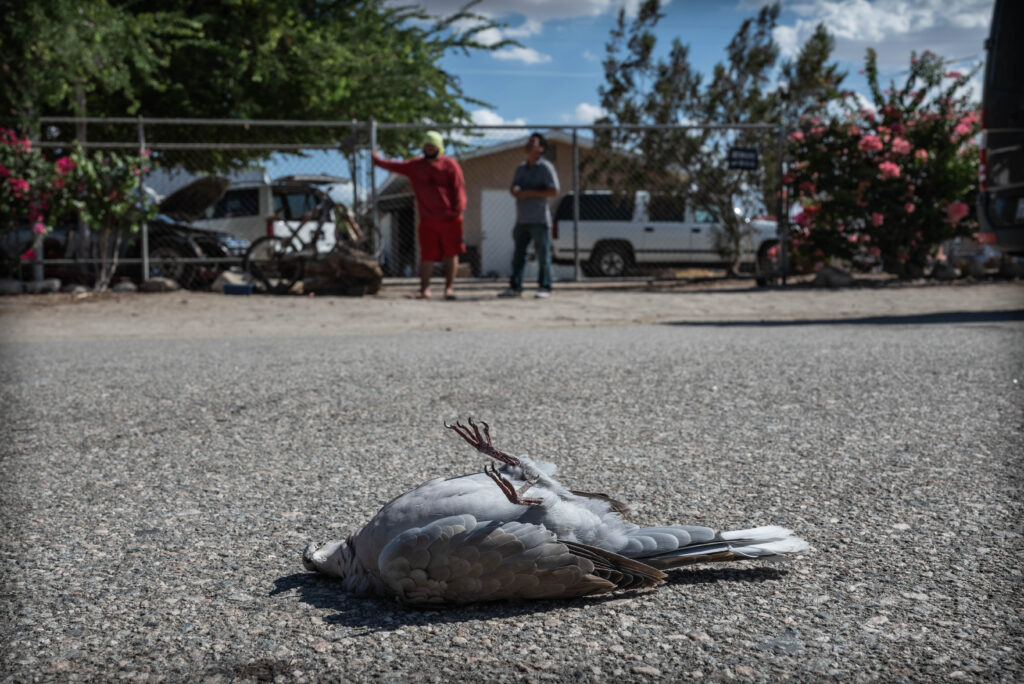
Lo que alguna vez fue un bello lugar turístico, rodeado de casas de descanso para personas adineradas, ahora es un poblado seco y peligroso. Olmedo advirtió que, de secarse por completo el lago, más de 100 millas alrededor resultarán afectadas en temas de salud y de alimentos, incluyendo Los Ángeles y San Diego, entre otras ciudades, alcanzando estados como Arizona y Nevada.
Te puede interesar: Condado Imperial: Una historia de éxito en la vacunación contra COVID-19 en California




